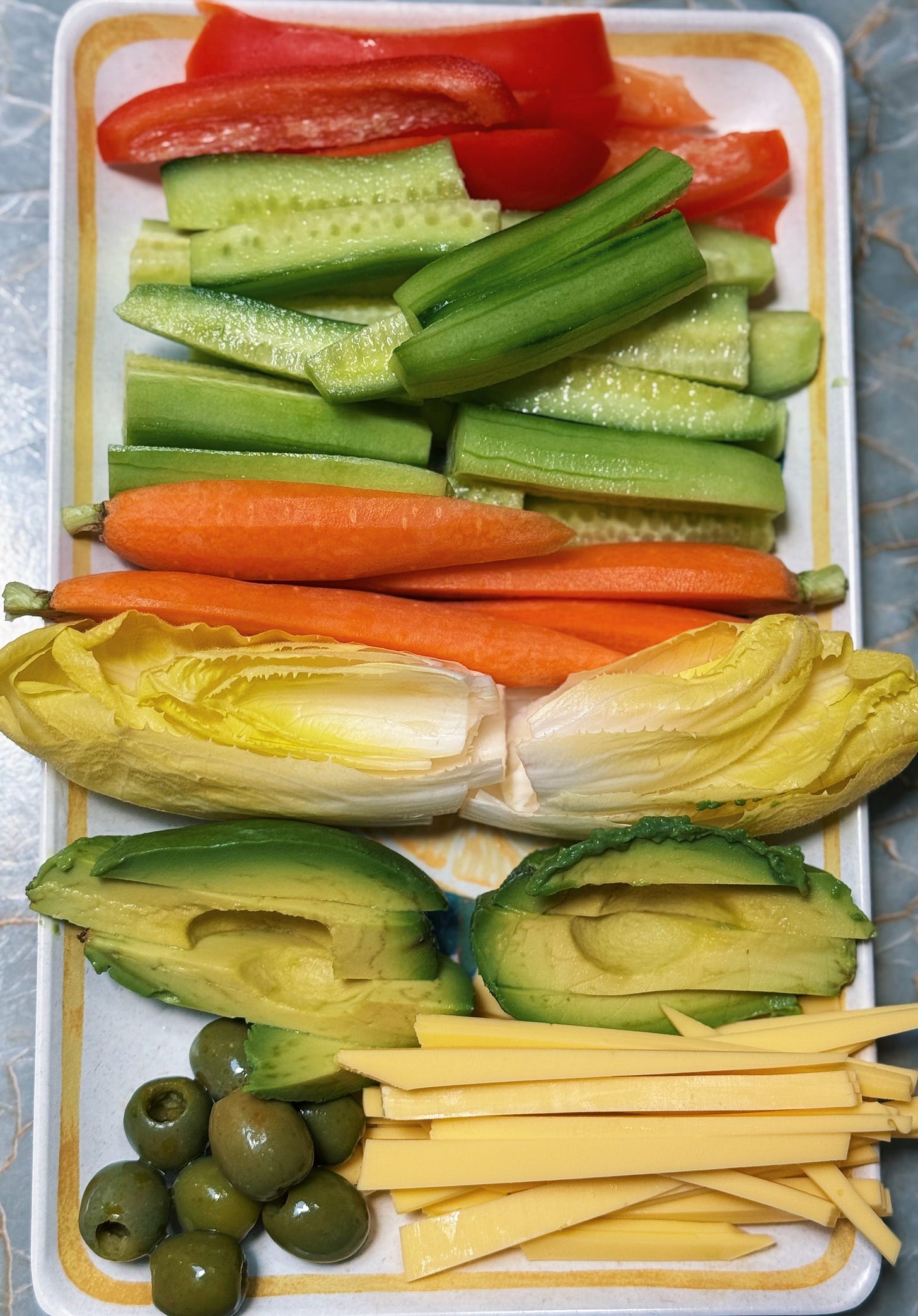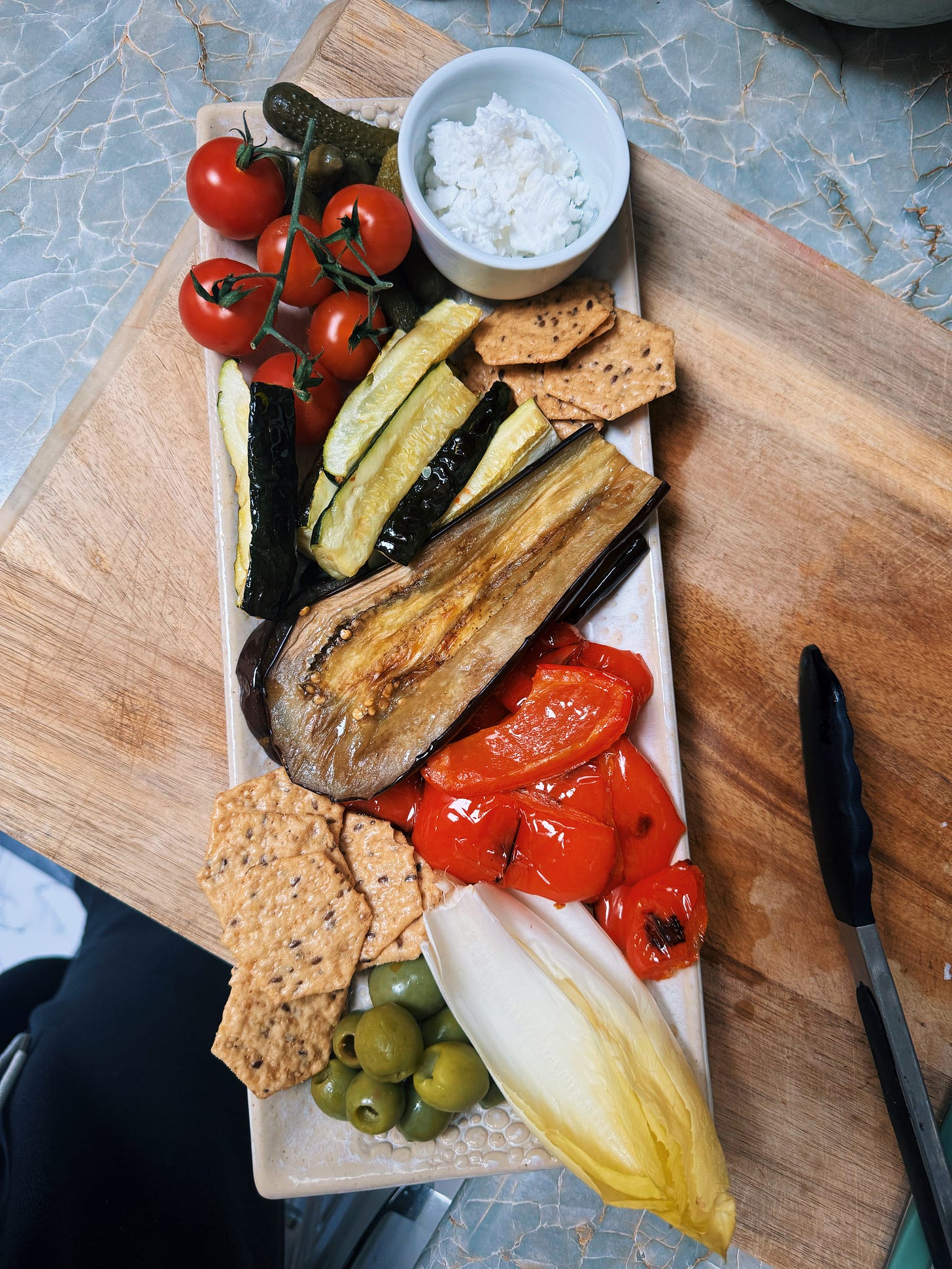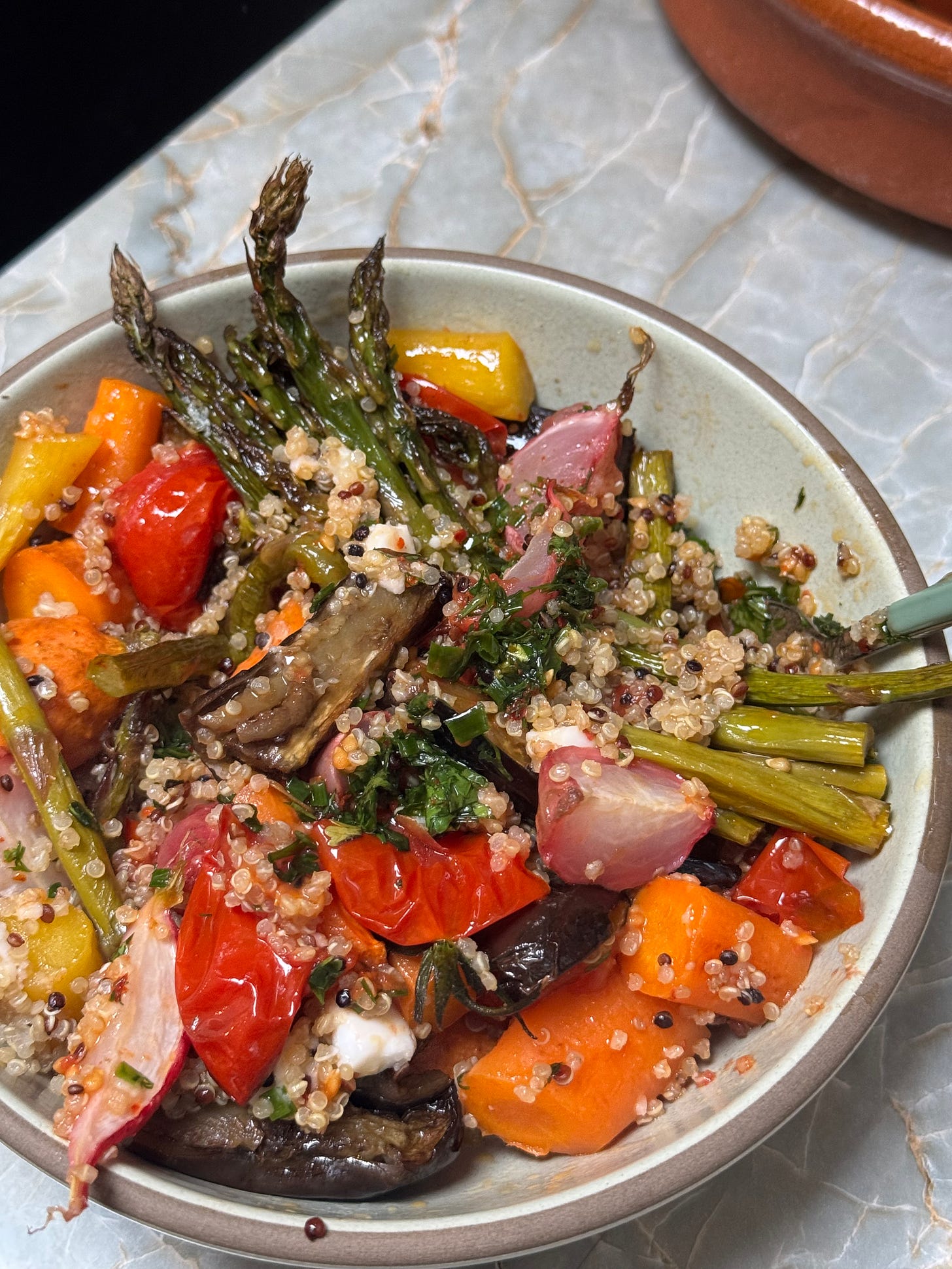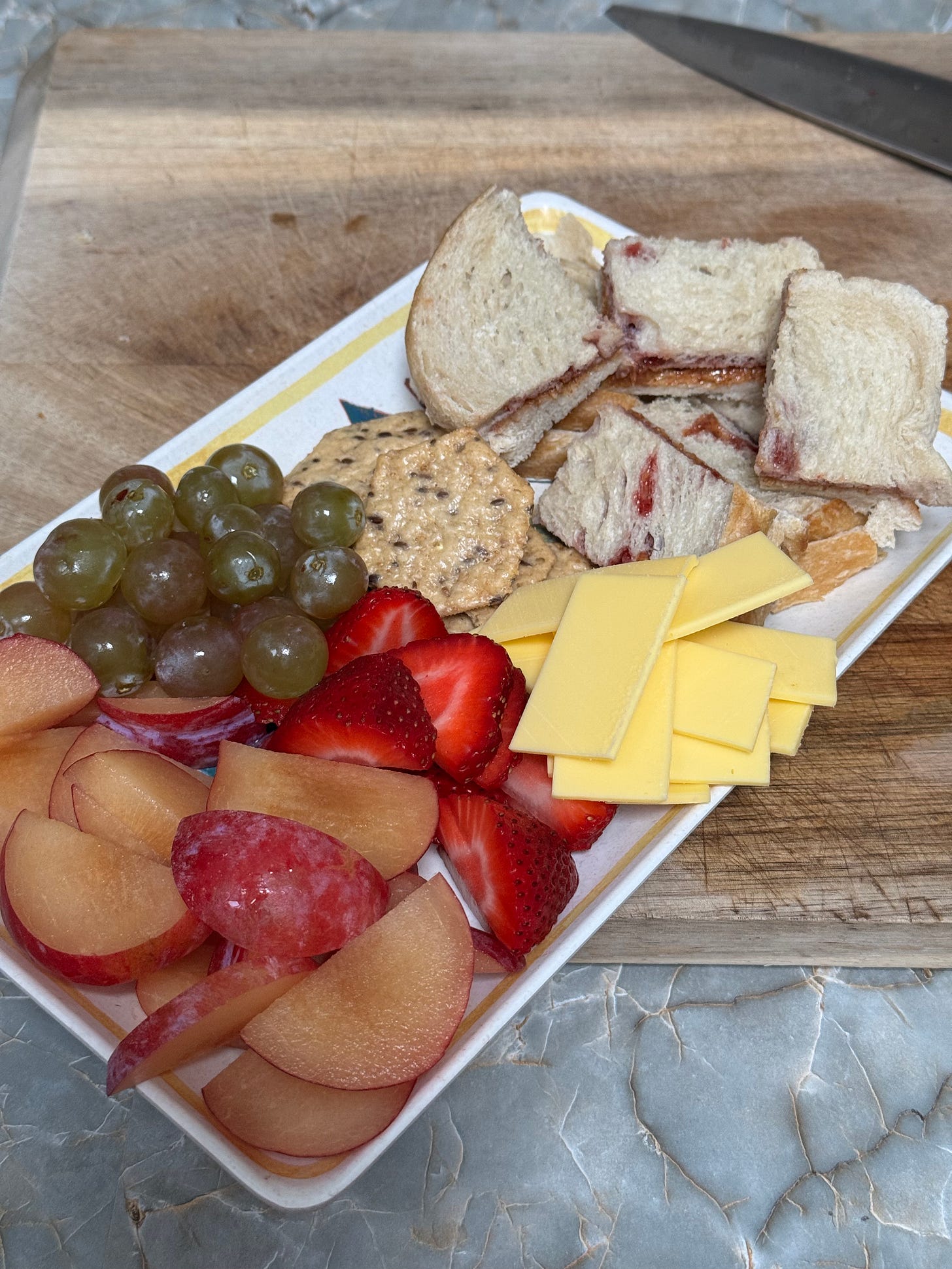Somewhere between “just a snack” and “full-blown meal,” I love putting together little snack plates for us throughout the day— a mix of whatever I had in the fridge that looked good, colorful, easy - or just produce we needed to use up. We do it at nearly every dinner. And now that summer is here and mornings are slower, I’ve started doing it for breakfast as well before the kids head off to camp.

The inspiration for all of this came out of desperation (and a bit of irritation). Guessing what everyone was in the mood to eat, having to avoid certain vegetables or ingredients based on individual preferences in dishes I was preparing, etc. at every single meal throughout the day was starting to get to me.
Trying to figure out meals that everyone will happily eat is hard when you’re feeding families! But we’ve been loving this approach.
Here’s why…
First, it’s a very low pressure, high variety situation. Snack plates take the pressure off of cooking a “full meal.” There’s no main dish to perfect—just a colorful, casual spread. I can offer a mix of flavors, textures, and options without committing to big portions or complicated recipes. It’s relaxed, it’s flexible, and it’s actually fun - especially when there’s a theme involved.

That ease flows right into how it gives kids a sense of agency—which they totally love. All kids reach a point where they just want to make their own choices, especially about what goes on their plate and into their mouths. Mine love mulling over their options, serving themselves, and exploring (even if it’s just with their eyes). Fun fact: it was a snack plate that helped my 6-year-old discover his love for endives. Yes, he dips them in ketchup—but still. I can assure you that if I served an elaborate endive salad, he wouldn’t look twice at it. Snack plates also work wonders for picky eaters. When there’s a range of small, approachable, open-ended choices, curiosity starts to override resistance.

It also helps with something I desperately need at mealtime: less stress. In our house, the stress usually starts with me and trickles down to everyone else (you’re welcome, everyone!) so I truly appreciate the calm that comes with snack plates. No pots bubbling over, no “who-doesn’t-this-or-that” panic, no timing a dozen things at once. I just assemble and serve. And when moods or cravings shift, it’s easy to adapt on the fly.
Another unexpected win? Way less food waste. On nights when there’s no theme, I just look around and use what needs to be eaten before it turns. It’s a great way to clear out the fridge and avoid tossing sad produce later. Plus, everyone ends up eating more of what’s in front of them because they’ve chosen it themselves. I don’t know the psychology behind that—but it works.

And maybe my favorite part: more balanced nutrition, without even trying that hard. When you’re assembling lots of small bites, it’s easy to end up with protein, fiber, color, healthy fats, and crunch all on the same plate. A slice of vegan cheese here, a scoop of edamame there, some berries, some roasted and raw veg—it adds up fast. And it takes the pressure off of overthinking every meal.
Some other notable things that I love that don’t need lengthy paragraphs or explanation: less dishes, you can do it any time of day, even the most basic plates have a wow factor because who doesn’t love surprise and variety.
Also, they make for great leftovers. What doesn’t get eaten can be set aside in a lunch box for the next day, or thrown into a bowl like the one pictured below.

Before I sign off, some snack plate tips I’ve found helpful:
Start with categories, not recipes. Think in small clusters: something crunchy, something fresh, something creamy, something salty, something sweet. You don’t need a plan— just a few different textures and flavors.
Pick a theme. When I’ve got a full fridge and all the options, I like anchoring my choices down to a single theme and it’s usually rooted in a cuisine. Mexican, Greek, Italian, etc. Or just use what you have. But most days, I just throw together a plate using what I’ve got on hand.
Aim for lots of familiar things and sprinkle in a little bit of new. When kids see something they already love next to something new they’re more likely to try it. It definitely won’t work every time, but i’ve seen it happen on many occasions.
Don’t overthink it.
This isn’t about getting every macro in. It’s about ease and enjoyment. A little of this, a little of that, and somehow it all comes together. And if it doesn’t, pair the snack plate with whatever you think is missing. If I’m doing a dinner snack plate, I almost always pair it with a rice, lentil stew, salad, or something like that to round out the meal and make sure it’s enough for the grown ups too!
That’s all for now! I hope this inspires you to create something delicious.
Off to dig through the fridge and figure out our next meal .
xo Jen




